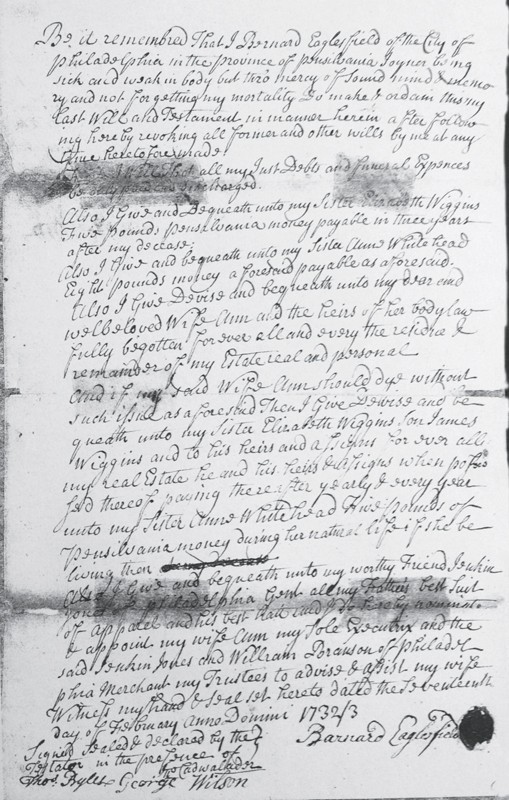
Will of Barnard Eaglesfield, Philadelphia, Pennsylvania, dated February 17, 1732/1733 and probated April 13, 1733. (Courtesy, Philadelphia Register of Wills.)
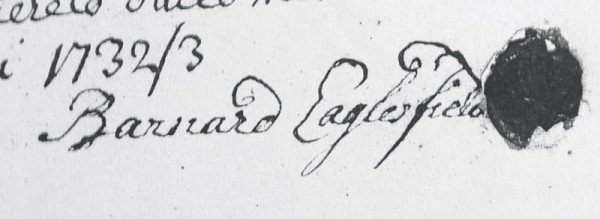
Signature of Barnard Eaglesfield on his will, Philadelphia, Pennsylvania, dated February 17, 1732/1733 and probated April 13, 1733. (Courtesy, Philadelphia Register of Wills.)
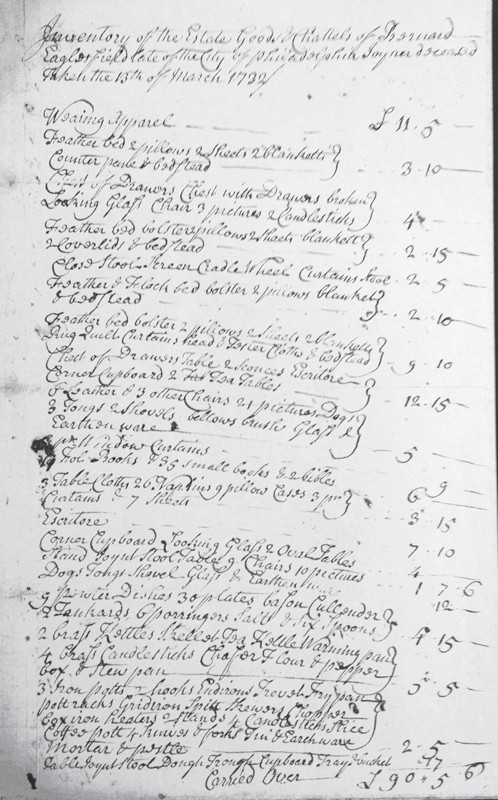
First page of the probate inventory of Barnard Eaglesfield, dated March 13, 1732[/1733]. (Courtesy, Philadelphia Register of Wills.)
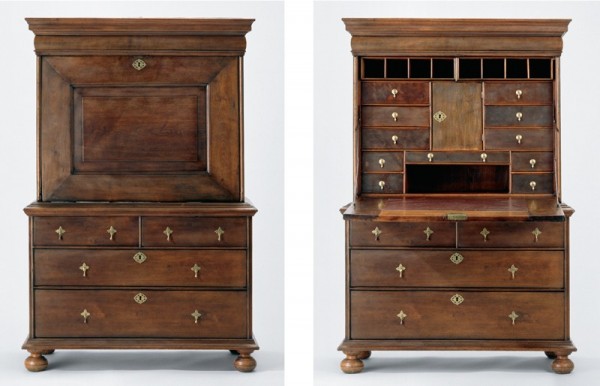
Edward Evans, scrutoire, Philadelphia, Pennsylvania, 1707. Walnut with Atlantic white cedar and white pine. H. 66 1/2", W. 44 1/2", D. 19 7/8". (Courtesy, Colonial Williamsburg Foundation.) The scrutoire is stamped “Edward Evans 1707” on the inside bottom drawer centered above the open well in the upper section. It is the earliest dated piece of Philadelphia furniture marked with a maker’s name.

Scrutoire, Philadelphia, Pennsylvania, 1715–1730. Walnut with Atlantic white cedar and hard pine. H. 64", W. 32", D. 20". (Courtesy, Dietrich American Foundation.) This scrutoire is illustrated open with the fall missing in William McPherson Hornor Jr., Blue Book Philadelphia Furniture (Philadelphia: privately printed, 1935), p. 15, pl. 1.
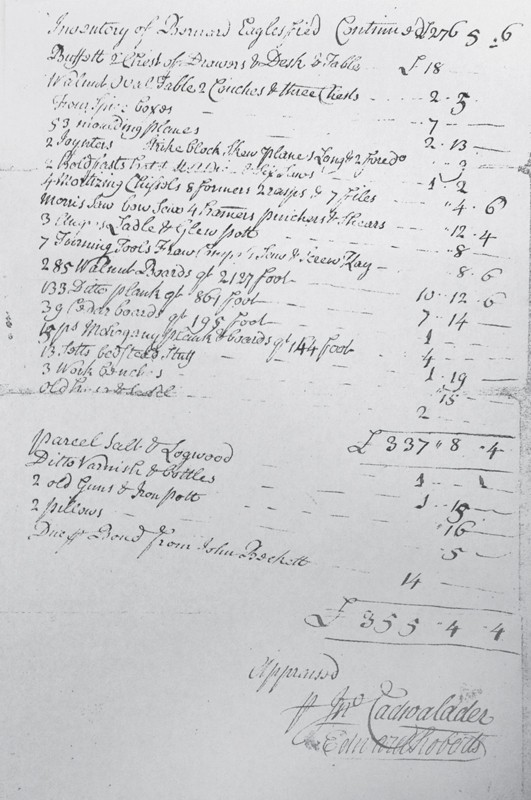
Last page of the probate inventory of Barnard Eaglesfield, dated March 13, 1732[/1733], listing 15 pieces of furniture; tools; varnish; planks and boards of mahogany, walnut, and cedar; and three work benches. (Courtesy, Philadelphia Register of Wills.)
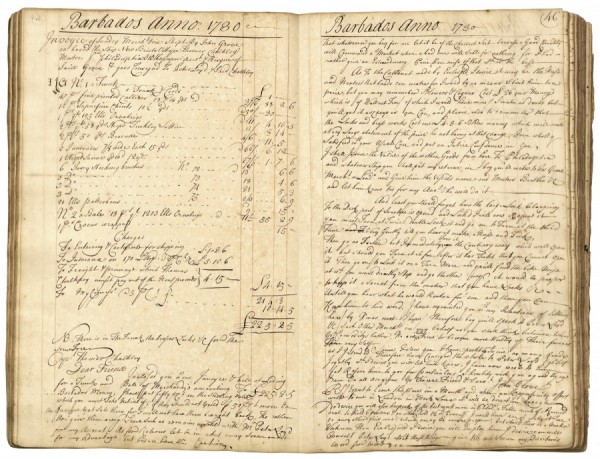
Transcription of a 1730 letter of instructions from John Grove to Thomas Chalkley in the Thomas Chalkley Account and Letter Book, 1729–1732, p. 46. (Courtesy, Historical Society of Pennsylvania.)

Henry Popple, A Map of the British Empire in America with the French and Spanish settlements adjacent thereto, [1733] ca. 1735. Engraving on paper. H. 15", W. 20 1/2". (Courtesy, Colonial Williamsburg Foundation.)
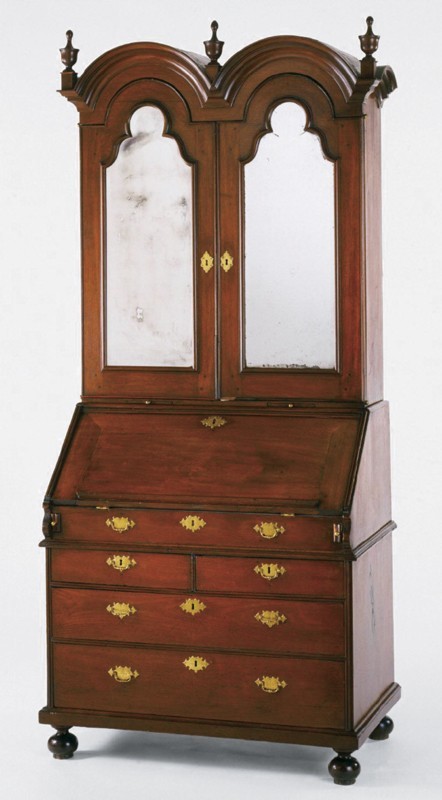
Desk-and-bookcase, probably Philadelphia, Pennsylvania, 1715–1730. Walnut with tulip poplar and walnut. H. 90", W. 40", D. 22 3/4". (Courtesy, Philadelphia Museum of Art; gift of Mrs. John Wintersteen.)
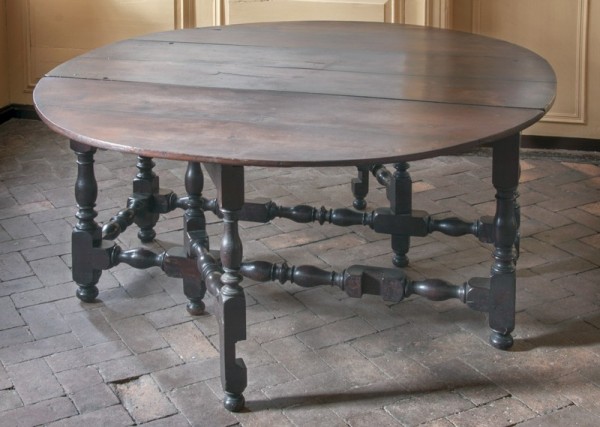
Oval table, Philadelphia, Pennsylvania, 1715–1730. Black walnut with Atlantic white cedar. H. 28 3/4", D. (top) 59 3/4", W. (open) 73". (Courtesy, Dietrich American Foundation.)
